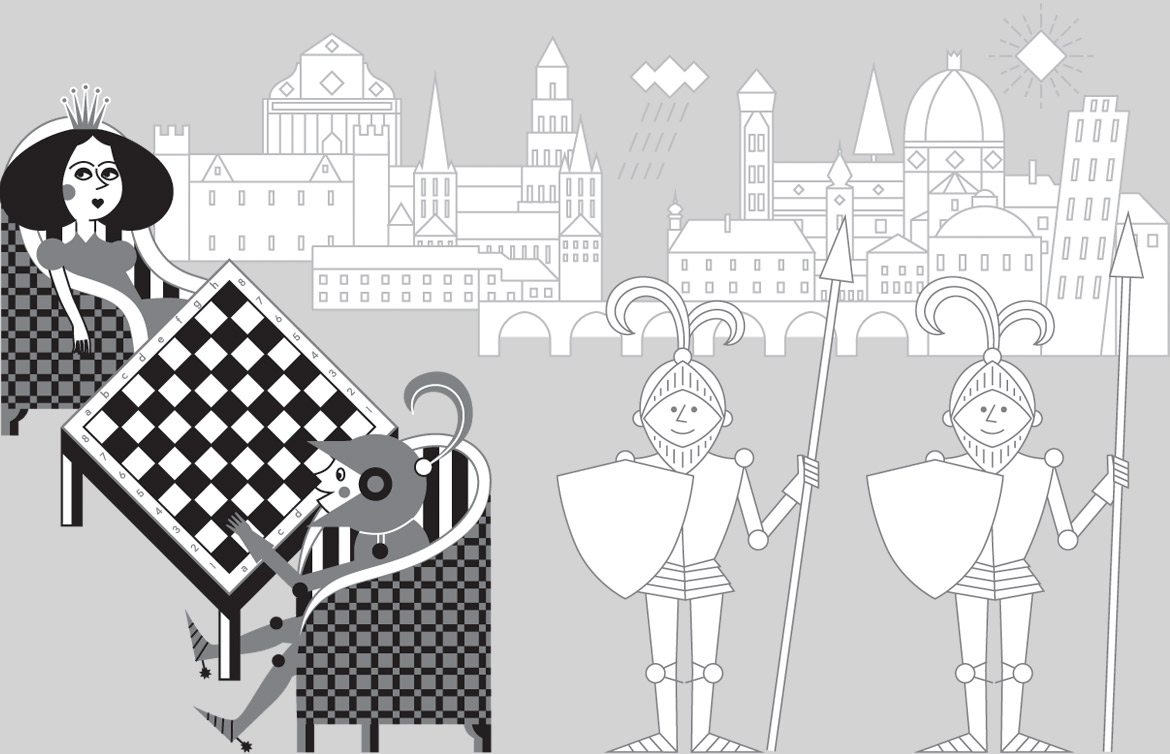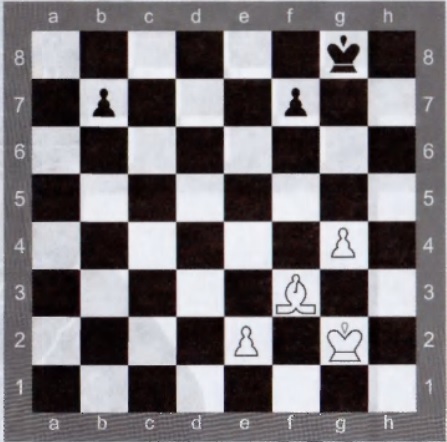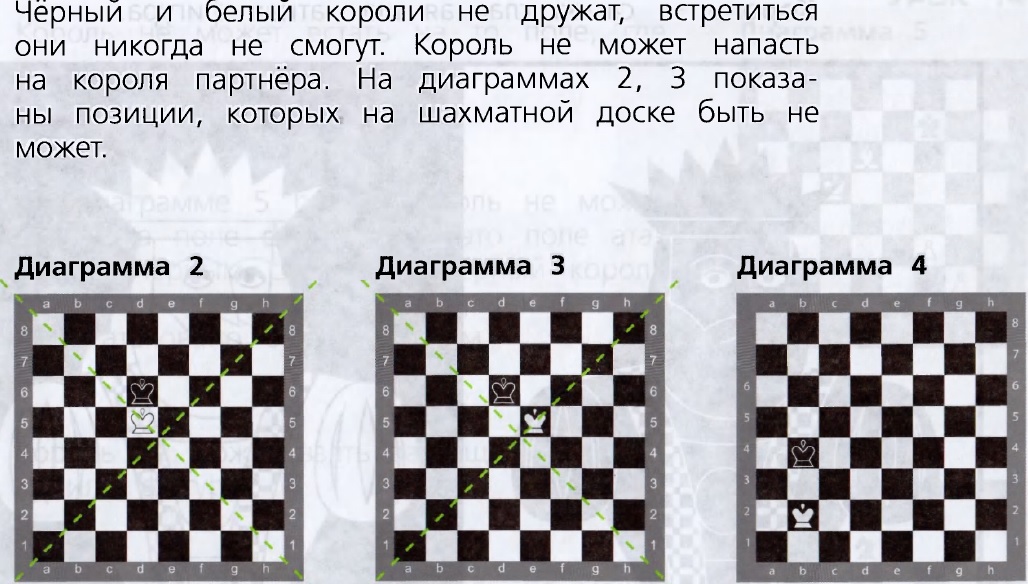Fear of chess imposed on you

Recently, more and more talk about the fact that children of primary school age should be taught chess. In this matter, all kinds of leaders spoke (Ilyumzhinov, the Timchenko Foundation, Vasilyeva, Putin). Chess course entered for testing in schools in primary schools, the children began to study it. And here the good news ends ... Everything really, everything is much more complicated than it seems. And maybe worse.
If you have children in schools, and they are used for this trial implementation of the "learning" system of chess, then you are definitely a cat. If not, it will be your turn soon.
In this article we will discuss the course "Chess in School", the authors of E.E. Umanskaya, E.I. Volkova, E.A. Prudnikova. Welcome to Hell…
The history of chess learning has been going on for a long time and times. As a child I also studied chess, my friends taught children chess, friends of friends taught children chess. There are many ways to learn chess. But the whole process of learning comes up against a simpler question - what do you personally want to get in a child after completing the basic course? To be able to win first places in tournaments, to fight on equal terms with the masters of chess, to participate in tournaments - then you and your child will play sports chess. The load there is no worse than in training in other sports. If you just want to teach the child to think, I will give him the basics of logical thinking - i.e. use chess as a development tool - welcome to educational chess. And here begins ...
Today we will discuss a freshly baked mass education course for children under chess under the leadership of Kirsan Ilyumzhinov. Few people have heard about this person, so I will not dwell on his person. We will look at what children who fall under the rink of his course will learn.
Kirsan Nikolaevich Ilyumzhinov presented his course quite recently, and it is interesting to see it. Rumors that go about how the course was written - I will not consider this article. Just facts and facts.
To begin with, the course is designed for children studying from the 1st to the 4th grade. The course itself starts from the beginning of the school year (judging by the number of hours in it - 33 lessons) and is taught by primary school teachers. And this is the first trap into which the compilers fell. The fact is that the children of the 1st grade are still in the happy childhood time, they are still heading in the kindergarten. In order to understand that the process of acquiring knowledge requires different skills than Sadikovsky, they need from 1 to 3 months. And this period depends largely on the teacher. Remember this moment - we will return to it.
The textbook begins unpretentiously, with one of the tales of the emergence of chess. The task that is given to child 1-grader - "Read the text." Already on the 14th page, a murderous metamorphosis takes place - the children are given a picture for fantasy with Latin letters. And they are asked to “dream up” what this picture means. At the moment, the child has not yet seen a chessboard, he does not know chess notation and what these letters can mean in general. I am silent about the fact that he (in some cases) only studies the Russian alphabet.
Next, go to page 19 - here the child must answer the questions “1. How many chess horizontals depicted on the castle? 2. How many towers are in the picture, and how many unicorns? ” A natural question arises - how do unicorns relate to chess? ..
Go ahead. Lesson 4 - vertical. The questions for the illustration on page 23 are even cooler than about unicorns: 1. How many chess verticals are depicted on the castle? 2. How many goals does a fairy dragon have? It can be seen playing chess with dragons and unicorns. Chess pieces are simply not enough.
And on page 24, a first grader (remember that he came from a kindergarten and even half of the children do not know how to read normally at these moments) receives a positive charge - the LATINIAN alphabet with Latin pronunciation. Tresh is aggravated by the fact that this information has nothing to do with the ability to think. A child can play chess beautifully without knowing the chess notation; believe it - it is in fact.
The next lesson teaches the child to navigate the chessboard - introduces a coordinate system. Nothing that the coordinate system is introduced in elementary school much later, if I am not mistaken - is it grade 3 or grade 4 of elementary school?
We go further.
The first figure is the rook. And this is correct - the rook is the easiest figure to understand. But what is written about her ... The history of the name of the rook is simply cut in half. If children give information, then it should be given, and not misinterpreted. Why is the rook is such and not another name, why it looks that way. There is nothing in the textbook about the origin of the word “rook” and why it looks like this.
After the rook we study the bishop. Also true - this is the optimal order of learning for the child. But it is just not clear what they want to do with the child. Task 1 on page 49 - “Using diagram 4, tell about all the possible moves of the white-squared bishop using chess notation”.

We look at the diagram - one of the possible moves is made by the bishop on the field, which the black pawn beats. If you ask a child a question: “Is it possible to go there?”, You will receive a lot of answers, some children know how the pawn moves, some do not know (after all, it has not been studied yet). And the children know that the figure just can not give. As a result, in the classroom begins, or if the task is performed in writing, you will receive DIFFERENT answers to the children. And they will be right! Though different.
Page 52, task 3 - “Sasha drew a chess diagram, find the mistakes that he made”.

In this diagram, it is apparently an error that White has two light-squared bishops (this is written in the methodological recommendations). But there can be two elephants on the board in the fields of the same color! This is NOT a mistake! But the board is wrong.
The next piece is studied queen. What we have for the moment is a first grader who sits in front of a chessboard. He worked on each figure one lesson. And for each lesson a maximum of four positions. At the same time, it is well known that at least 7 repetitions are necessary for correct memorization. I guarantee you that when the child passes the queen, he will start to confuse the moves of the pieces, since got a little practice on the board. Remember that the whole process is controlled by the teacher, for whom chess is a figure paper - primary school teachers are most often afraid of chess, like the devil. This is not their direction, they often do not even know how the figures walk, but here they are dumped from the kindergarten stream of ill-mannered children, who must be calmed down, taught to read-write, and even the teacher does not know how to play chess.
By the way, the fact that the teacher does not know how to play will lead to the fact that children will walk incorrectly, and this will be remembered. To catch the wrong move in a class of 20-30 children is difficult even for a trained chess teacher.
Horse ... No words. This is the most difficult figure to study. The fact that she goes on this place is normal, the horse can and should be studied after the queen. But there is one thing - it is necessary to allocate at least 3-4 lessons to it, otherwise it’s all 5-6. From studying a horse you cannot leave if children have not learned how he walks. My wards in the lessons on the horse are usually turned off for 3-4 tasks, especially resistant ones withstand tasks 6-8. But we train a horse 5.
Pawn goes next. Yes - it is also logical, this is the last figure studied before the king. But why are the rules of pawn moves divided into 3 lessons, in addition diluted by the king? Taking on the aisle is the most difficult of the rules, but is deliberately pushed aside for later. If a child learns the rules of moves, then you need to study them all together, rather than randomly.
King. I remember the times when I was studying in a pedagogical university, I received one wonderful advice from there - NEVER show children the wrong decision. They will remember him. On page 77 we have 3 diagrams, of which two are impossible in chess.

At the same time, the diagrams themselves do not highlight the fact that they are impossible, and this is given in the text. Do you remember how old children are? Yes, yes, these are first graders who read the text barely, and they will naturally look at the drawings. And there are 2 impossible - what do you think will happen in the future?
Further, the value of the figures is studied, the following definitions are given: “A profitable take is a take in which a partner wins a piece or preserves the material relationship of the pieces on the board. A disadvantageous take is a take in which one gives one’s own more valuable piece to a less valuable piece of a partner. ” But I'm sorry, but if I donate a piece, then to win another? Why should a child give such a contradictory definition? But this is allocated for memorization, some teachers can make learning the definition by heart!
Shah and ways to protect against the Shah. The fact is that the order in the presentation of the material is important for children at this age. And he is given here in what order: 1. To lead the king from the battlefield (leave). 2. Beat the piece that attacks the king (beat). 3. Shut off the strike line (close). The nuance in the following is the fact that it is better to teach the child in this order: “1. Kill 2. Close 3. Move away. The focus is in psychology - children often tend to move away, instead of killing an attacking figure. And at the beginner level it is necessary to shoot down.
I will skip the technique of setting the rook and queen. The question is difficult, as well as with a horse, more than one lesson is required to practice these mats. Very often, children in tournaments cannot checkmate even two rooks.
Let's move on - material advantage.
Definition: “If in the process of a game one of the partners acquired an extra figure, then it is considered that he has a material advantage.” Stop! But, if I change the queen for a pawn, then I will have a material advantage. And according to this definition, it is not, because you do not have an extra piece - the number of pieces is strictly the same, which means there is no material advantage.
And then a masterpiece: “ Positional advantage is the best arrangement of figures on one side.” Stop stop. Have you taught children to determine where it is better for someone to stand? Oh, no? And it would be nice to teach. But this lesson takes too much time - a year or two. And we have not finished the first year, but the children should already know that their position is worse than that of their rival.
Lesson 29 - recording a chess game. This is at the end of the first year of study, when the moves of the figures are not worked out, when the children still write like a chicken with their paw, when they were not taught to think, but simply to move the figures mechanically. Evaluation of this lesson can not even give. When I train children, the recording of chess games is practiced in the order of 3-4 lessons, and then practiced constantly, so that they learn how to write. This lesson is given at the end of the school year, when all children have their heads already in holidays, when it is possible that there is a lag from the curriculum for some reason. In addition, children will not be able to repeat this material for sure - there simply is not enough time. So, they will forget it successfully. In addition, only the short form is given in the record, not a word about the full form of recording moves. Justification of the record of the games - “your first chess tournament will take place soon”. It can be seen that the compilers do not know what the first chess tournament is, what kind of load the child is under - psychological, physical. That the record of games is only in classical chess, when time is given for at least half an hour. Children write for a very long time, especially when it happens the first time. And at the tournament you have to play at least 4 games, no less. Where so much time at the end of the school year?
But from where - from the 31st to the 33rd lessons the team chess tournament is held. Oh - he is with the record, and this is at least an hour for one batch. Total 3-4 games will be played, well, no more. Plus, some children will play faster - they will have to sit and wait for the rest to play? Can you imagine what will happen? If not, then look - children are seated for the game. Someone plays for 5-7 minutes, someone continues to play on. Those who played have to wait for their teammates, since team tournament. And this means that around those who continue to play, a handful of observers will be formed, who will gamble and give advice. All children are different, they react to these tips differently. And they also write down the game ... And this will continue 3 lessons. I sympathize with the teacher - the chess tournament of beginner chess players for seasoned coaches and judges is still a test, and what will the teacher feel to whom chess is generally imposed?
Read the horror that awaits you? But I deliberately cut and gave incomplete estimates of this course. In the text, except for actual errors, there are a lot of methodical ones. Without taking into account the age of children, without achieving the stated goals. It is not bookmarked that some of the children may already know how the figures walk. And all this falls out on the teacher, who is already in panic afraid of chess.
In general, if at your school chess is taught according to this program, then I sympathize with you. Analysis of other chess programs will be in the following articles.
All Articles